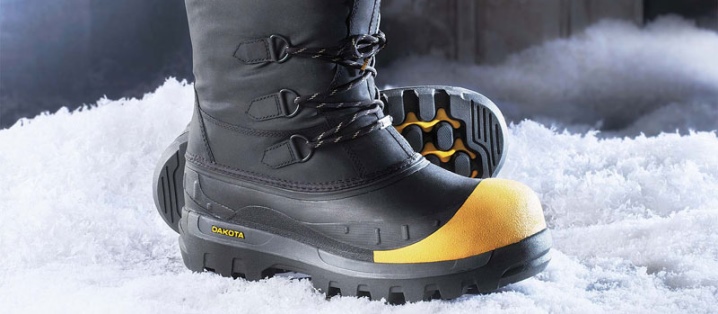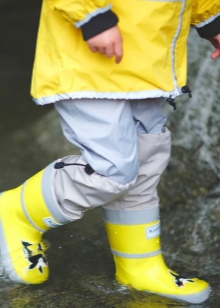Selection criteria for winter work boots

The climatic conditions of many regions of our country, even during the period of global warming on the planet Earth, remain rather harsh. Therefore, it is impossible to work most of the year without appropriate equipment. This is why the selection criteria for winter work boots are so important.



Peculiarities
Safety shoes for the cold season should be warm and at the same time as comfortable as possible. This requirement is absolutely leading, as uncomfortable and impractical shoes can cause very serious problems. Of course, good work boots must be able to withstand very cold temperatures. In addition, an important role is played by:
flexion of the sole when walking;
soft insoles;
reliable protector that allows you to walk on icy areas;
high-quality materials of the last generation;
protection from anti-icing mixtures.



Views
When choosing boots, first of all, you should consider the degree of protection from the cold. If there are relatively warm days, when the temperature ranges from –5 to +5 degrees, you need to select models with a bike lining or on a thin membrane. In some cases, genuine leather lining is acceptable. But it is not always possible to count on such favorable conditions in winter. Therefore, at temperatures from -15 to -5 degrees, boots with woolen or membrane lining are used.
But many workers working outdoors (in the open air) occasionally have to work in the cold with a lower temperature. In such conditions, either a fur or a thick membrane lining is required. If, in this case, you use the shoes described above, then your feet will be very cold. In the temperature range from -20 to -35 degrees, it is usually recommended to use insulated high boots or felt boots.
Some manufacturers offer footwear with special membranes designed for severe frosts.


Whether to trust such promises or not, you need to decide for yourself. But shoes, which are designed to work in the north and in other places, where the thermometer often drops below 35 degrees below zero, must be taken seriously. Here it will be safer to use good high fur boots with maximum insulation. But even better is a special type of winter boots. Important: in ordinary stores, including in the online trade of general footwear, such boots are not sold in principle.
The fact is that special boots undergo separate certification... Increased requirements are also imposed on the certification of materials for them. A number of frost resistance classes are envisaged, but professionals should understand these classes. It is quite clear that there are no universal shoes for winter and there never will be. If someone promises that some models of boots or boots will equally help out in a mild frost and at -25 degrees, then this is probably an action of low-quality marketing.


Popular models
Canadian winter shoes are in high demand Kamik Waterproof... In the manufacture of these boots, insulation is used, which is not used anywhere else. The main properties of the specified Canadian shoes:
ease;
availability in the range of models up to size 47;
excellent resistance to water;
comparatively low bootleg height.
Of the shortcomings, one point can be highlighted: it is difficult to walk on slippery places. But this minus is, of course, important both for workers who care about their health and for Russian employers who are responsible for any accidents at work.


It can be noted a good model of boots "Toptygin" from the Russian manufacturer "Vezdekhod"... The designers have managed to ensure the maximum elasticity of the bootleg. The fur liner has as many as 4 layers. The manufacturer promises operation at temperatures up to -45 degrees without excessive stiffness of the pads. Thanks to the tightening cuff, snow will not get inside.


And also in good demand:
Baffin Titan;
Woodland Grand EVA 100;
Torvi EVA TEP T-60;
"Bear" SV-73sh.




If these are not enough to choose from, you should pay attention to the products:
Rieker;
Ralf Ringer;
Wrangler;
Columbia.




Selection Tips
Materials are of course important for winter footwear. But it is equally important to find out how well moisture will drain away from the foot. And this already depends on the design decisions, and on how the developers will dispose of the material. Curiously, rubber shoes with a multi-layer structure usually withstand the lowest temperatures. It allows the skin to "breathe" precisely due to the original design.
Many people are interested in the ease of drying shoes. But if in the city this is just an assessment of the burdensome use of products, then in remote places, expeditions, global construction sites, only such shoes that can be quickly dried are justified. Hunters, fishermen, tourists, and other mobile people are forced to buy light and thin boots. Thanks to modern technology, they provide excellent frost protection.
But you shouldn't overestimate traditional fur if it gets wet - only a stove or a fire will help.



An overview of Driller winter work boots in the video below.













The comment was sent successfully.